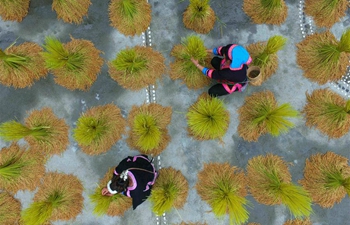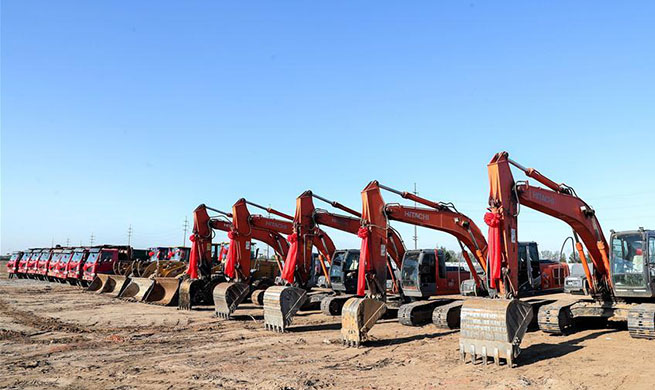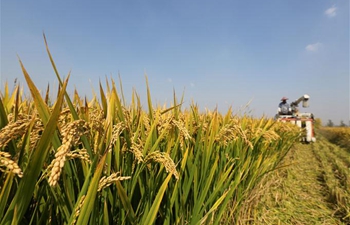TOKYO, Oct. 11 (Xinhua) -- Japan's space agency said Thursday it will postpone the landing of its Hayabusa2 space probe on the asteroid Ryugu until at least January from its initial touchdown scheduled for October.
The Japan Aerospace Exploration Agency (JAXA) said it has found the surface of the asteroid, which is about 300 million kilometers from Earth and 900 meters in diameter, to be rockier than it first thought and will need more time to ensure the safe landing of the probe.
On Oct. 3, Hayabusa2 released a small-sized Mobile Asteroid Surface Scout, also known as MASCOT, jointly developed by German and French space agencies, which touched down successfully on the asteroid.
Prior to that, two small robotic rovers also launched from Hayabusa2 successfully landed on Ryugu on Sept. 22.
The rovers have been taking images of the asteroid and performing other functions such as measuring its surface temperature.
JAXA said the images of Ryugu captured by the robots have revealed a cluster of bumpy rocks and a lack of flat surfaces for the main probe to land on.
The space agency said, however, that Hayabusa2 will conduct two landing rehearsals this month.
Hayabusa2 reached its intended destination on June 27 near the asteroid, after traveling for more than three years.
According to the agency, the 600-kg Hayabusa2, which was launched from the Tanegashima Space Center in southwestern Japan in December 2014, has experienced no problems, up until now, throughout its journey totaling 3.2 billion kilometers.
The agency said that in total, Hayabusa2 is scheduled to make three landings on the asteroid and collect rock samples and will stay close to Ryugu for one and a half years.
During this time it will conduct a number of exploratory activities in an attempt to try to find clues about the solar system's evolution and the beginning of life itself.
Hayabusa2's mission will be completed when it returns to earth in 2020 with the samples of rocks it has collected from Ryugu, which is thought to contain water and other materials that could possibly support life.

















